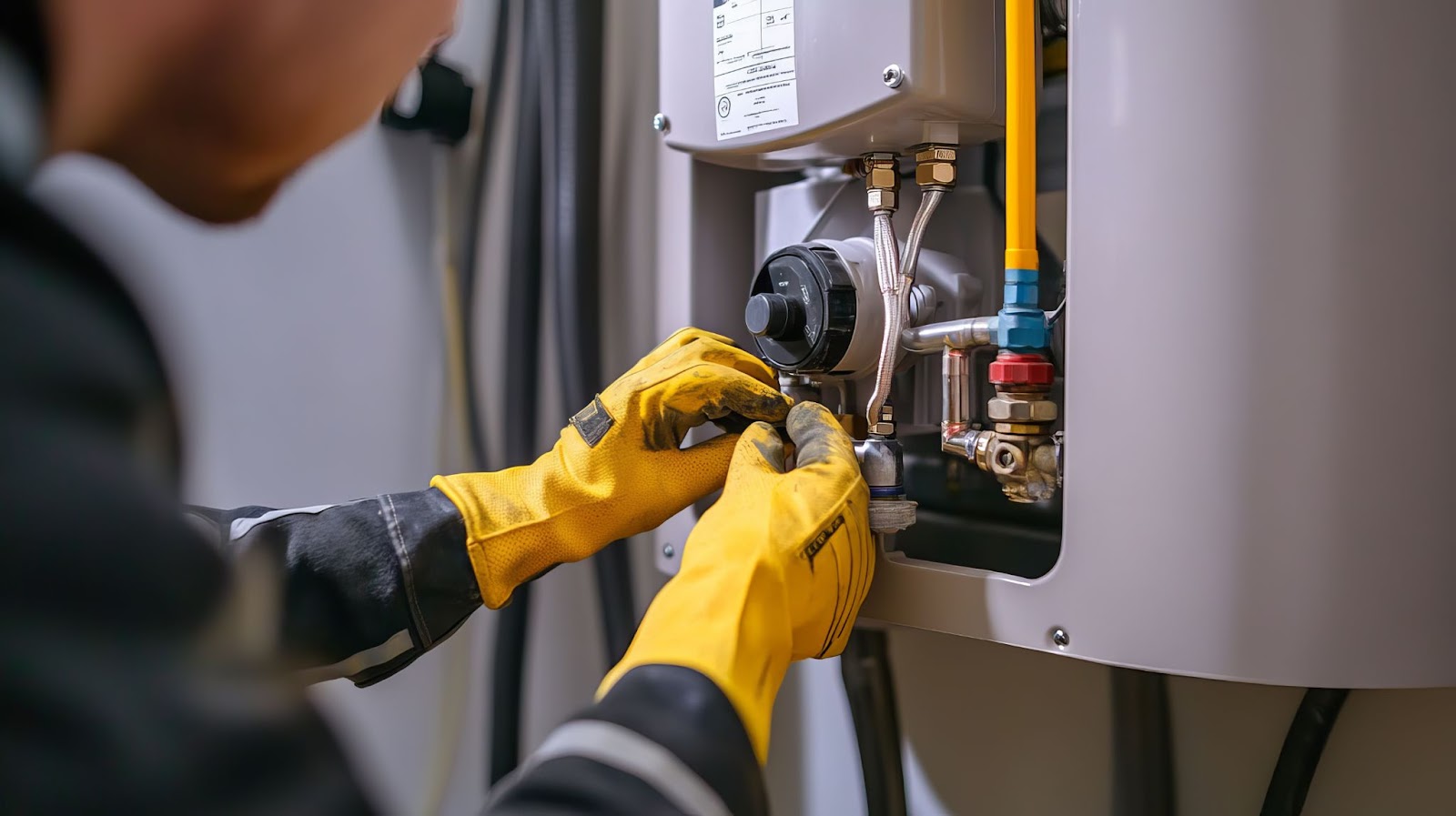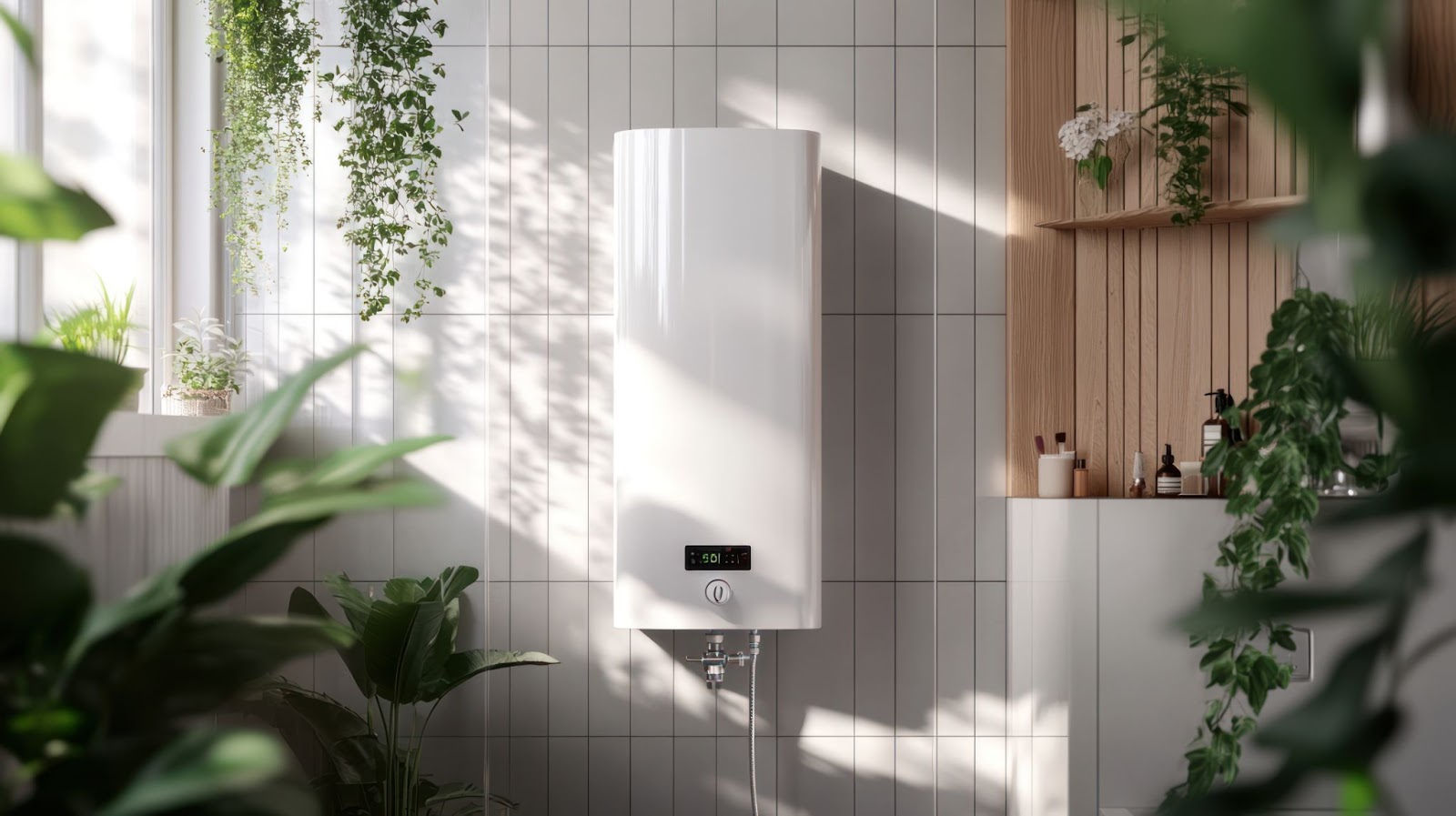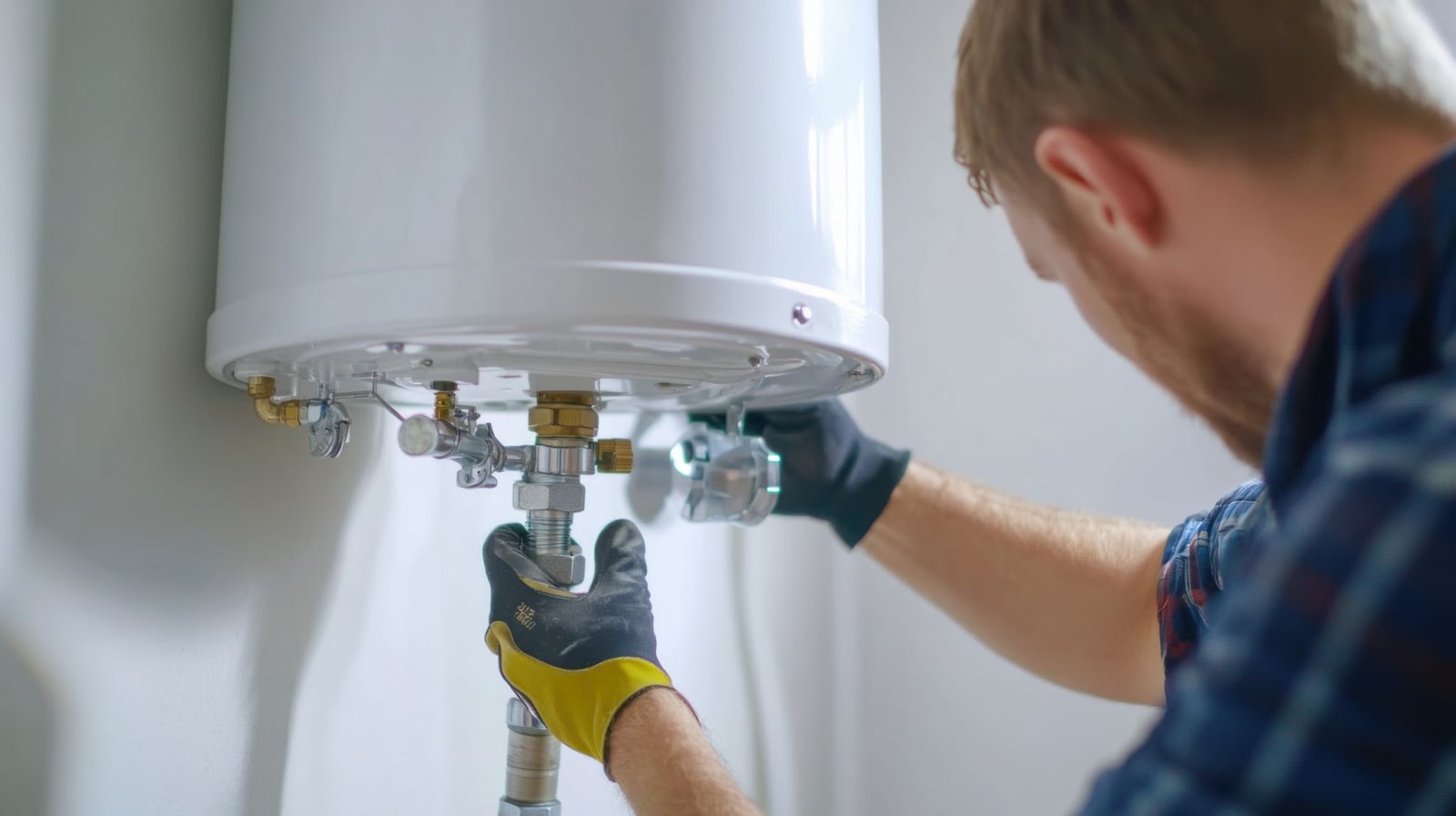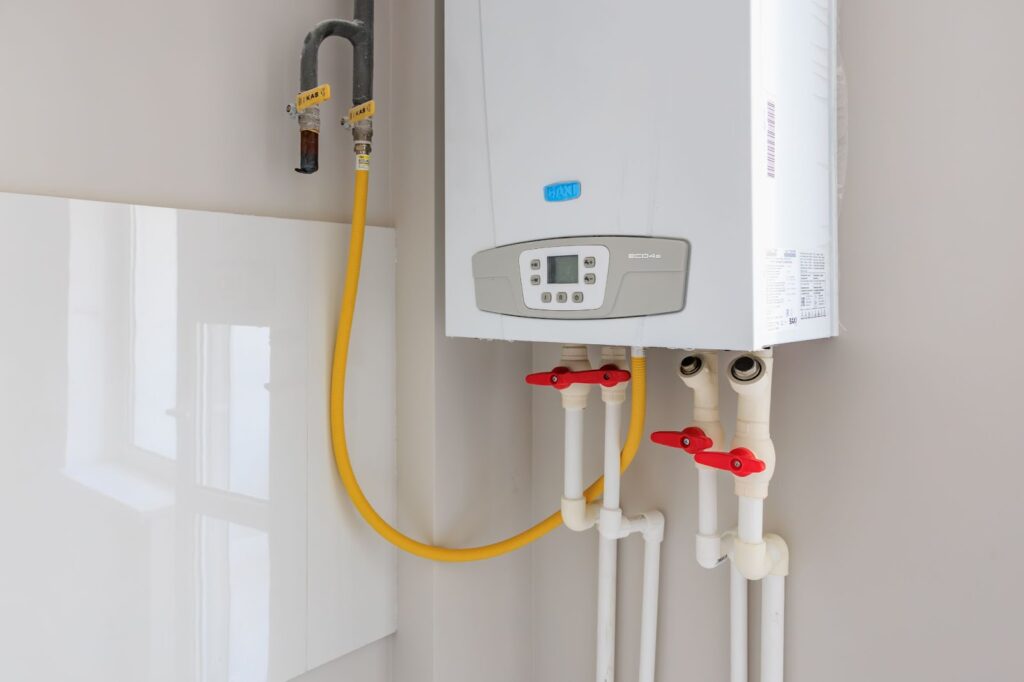Your water heater works quietly behind the scenes every day, providing hot water for showers, dishes, laundry, and more. Yet, like any appliance, it needs regular care to keep running efficiently. Water heater repair comes with a lack of maintenance.
Indeed, without proper servicing, sediment buildup, worn parts, and unnoticed issues can shorten your water heater’s lifespan, raise your energy bills, or even leave you without hot water when you need it most.
So, how often should you service your water heater to avoid needing hot water heater repair?
The answer depends on several factors, including the type of unit, water quality, household size, and the system's age.
In this blog, we’ll break down the general guidelines, explore what impacts service frequency, and share tips for creating a maintenance schedule that protects your investment and keeps your hot water flowing year-round.
General guidelines for servicing a water heater
Annual professional inspection
It’s best to schedule a full inspection with a licensed plumber once a year. During this appointment, the plumber examines the tank, heating elements, anode rod, pressure relief valve, and overall system for leaks or corrosion. Inspections for tankless models include checking filters and descaling the unit if mineral buildup occurs.
Flushing the tank
Traditional tank water heaters collect sediment at the bottom over time. Flushing the tank once a year clears this debris, helping prevent overheating, reduced efficiency, or premature failure. In areas with hard water, flushing every six months may be necessary.

Checking the anode rod
The anode rod prevents tank corrosion. It should be inspected every one to two years and replaced if it’s more than 50% worn. This simple step can add years to the heater's life.
Testing the pressure relief valve
The temperature and pressure (T&P) relief valve is an important safety feature. Once a year, lift the valve’s lever to make sure water flows out of the discharge pipe. If it doesn’t, replace the valve immediately.
Monitoring temperature settings
Set the thermostat to around 120°F. This temperature prevents scalding, lowers energy costs, and reduces wear on the system. Higher settings increase both stress on components and monthly utility bills.
Descaling tankless systems
Tankless water heaters require different care. Professionals recommend flushing and descaling every 12–18 months to prevent mineral deposits from clogging the heat exchanger. Homes with hard water may need this done more often.
Watching for warning signs
Even between scheduled services, homeowners should look for signs of trouble. Fluctuating water temperatures, strange noises, rusty water, reduced flow, leaks, or rising energy bills often mean the water heater needs attention sooner.
Rule of thumb
Schedule water heater servicing at least once a year. If your system is older, your water is hard, or your household uses a lot of water, plan on servicing it every six months to keep it running at peak efficiency and avoid needing hot water heater repair.
Factors that affect service frequency
The frequency of water heater maintenance isn’t the same for every home. Here’s a closer look at the main considerations:
Type of water heater
Different systems have different servicing needs. Tank water heaters are more prone to sediment buildup, which settles at the bottom of the tank and reduces efficiency. These typically require annual flushing, but every six months is sometimes necessary in high-demand or hard water conditions.
Tankless water heaters, on the other hand, don’t store water but still experience mineral scaling inside the heat exchanger. Depending on the water quality, they need to be flushed and descaled every 12–18 months.

2. Age of the unit
Older water heaters often require more frequent checkups. As components wear down, problems like leaks, faulty thermostats, or corroded anode rods become more common.
Units nearing the end of their lifespan — eight to 12 years for tank models and up to 20 years for tankless — should be inspected at least once a year, if not more often, to catch small issues before they cause breakdowns.
3. Water quality
Your home’s water quality plays a major role. Hard water accelerates sediment buildup and scaling, forcing the system to work harder and shortening its lifespan. Homes with hard water often need water heater servicing twice a year to stay ahead of the problem. Installing a water softener can reduce scaling and extend the time between services.
4. Household size and usage
The more people in a household, the harder the water heater has to work. Larger families or properties with high hot water demand put extra strain on the unit.
This increased usage means sediment and wear build up faster, making more frequent servicing necessary. In smaller households with lighter usage, annual maintenance is usually sufficient.
How to create a maintenance schedule
A clear maintenance schedule helps keep your water heater running smoothly without needing hot water heater repair. Here’s how to build a schedule that works:
Start with annual servicing as a baseline
Plan for at least one professional inspection each year. This ensures a plumber can flush the system, check the anode rod, test safety valves, and catch small problems before they become major repairs. For most households, once a year is enough to keep things running smoothly.
Factor in water quality
If you have hard water, double up on maintenance. Flushing or descaling every six months may be necessary. A water softener can help extend the time between services and reduce scale buildup.
Keep a maintenance log
Record each service date, what you have done, and when the next service is due. This helps track patterns, makes warranty claims easier, and ensures you never miss a check. A simple calendar reminder or dedicated home maintenance journal works well.
Watch for warning signs between scheduled services
Even with a set schedule, don’t ignore unusual changes. Strange noises, rust-colored water, temperature fluctuations, or leaks signal that it’s time to call a plumber sooner than planned.
DIY vs professional water heater maintenance
Some aspects of water heater maintenance are safe for homeowners to handle on their own, while you’ll want to call a licensed plumber for others. Knowing the difference helps you protect your system without risking your safety. (If you need hot water repair, always call the professionals.)
What you can DIY
Homeowners can take care of simple, routine tasks that don’t require specialized tools or training. These include:
- Flushing the tank once or twice a year to reduce sediment buildup (for tank models).
- Checking the thermostat settings to keep the water temperature around 120°F.
- Testing the pressure relief valve by lifting the lever to confirm water flows through the discharge pipe.
- Visual inspections to look for leaks, corrosion, or unusual signs around the tank.
These DIY steps help keep the system efficient and can alert you early if something seems off.
What to leave to professionals
Some maintenance tasks involve safety risks, gas or electrical components, and specialized equipment. A plumber should handle:
- Replacing the anode rod, which prevents tank corrosion.
- Inspecting or replacing heating elements and thermostats in electric units.
- Gas line or vent inspections for gas water heaters.
- Full descaling and servicing of tankless systems, especially in areas with hard water.
- Leak detection and system-wide inspections, which require professional tools.
Professional servicing ensures that your water heater is safe, efficient, and compliant with local codes, while DIY care helps you stay proactive between service visits.

Have Neighborly Plumbing service your water heater
Don’t wait until your water heater breaks down to give it the care it needs. Regular maintenance keeps your system efficient, reliable, and long-lasting — and having the right professionals on your side makes all the difference.
At Neighborly Plumbing, we provide expert water heater servicing as part of our full range of plumbing solutions. Whether you need routine maintenance, fast water heater repairs, or advice on when it’s time for a replacement, our team is here to help with dependable service you can trust.
Contact Neighborly Plumbing today for all your plumbing needs and enjoy the peace of mind that comes with knowing your water heater — and your home’s entire plumbing system — is in expert hands.





